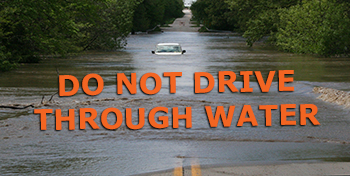The Importance of Flood Barriers in Mitigating Water Damage
Flood barriers play a crucial role in protecting communities and properties from the devastating impact of floods. These structures are designed to prevent or reduce the flow of water into specific areas, helping to minimize damage and safeguard lives and livelihoods. Let’s explore the significance of flood barriers in mitigating water damage.
Preventing Floodwaters from Inundating Properties
One of the primary functions of flood barriers is to create a physical barrier that blocks or redirects floodwaters away from homes, businesses, and critical infrastructure. By strategically placing barriers in vulnerable areas, such as riverbanks or coastal regions, communities can significantly reduce the risk of inundation during heavy rainfall or storm surges.
Minimizing Structural Damage
During a flood event, water can exert immense pressure on buildings and structures, leading to structural damage and compromising their integrity. Flood barriers help alleviate this pressure by limiting the amount of water that comes into contact with vulnerable properties. This proactive measure can prevent costly repairs and reconstruction efforts post-flooding.
Protecting Lives and Enhancing Safety
In addition to safeguarding properties, flood barriers also play a critical role in protecting human lives. By containing floodwaters within designated areas and preventing widespread flooding, these structures help ensure the safety of residents and emergency responders during extreme weather events. This proactive approach can mitigate the risk of injuries and fatalities associated with flooding.
Promoting Resilience and Sustainability
Investing in flood barriers is an essential component of building resilient communities that can withstand environmental challenges. By implementing effective flood protection measures, communities can reduce their vulnerability to flooding, enhance their ability to recover quickly from disasters, and promote long-term sustainability. Flood barriers contribute to overall disaster preparedness efforts and foster a culture of resilience among residents.
Conclusion
In conclusion, flood barriers are indispensable tools for mitigating water damage and enhancing community resilience in the face of flooding events. By investing in robust flood protection infrastructure and implementing proactive measures, communities can effectively reduce the impact of floods on properties, lives, and infrastructure. The strategic deployment of flood barriers is a vital step toward creating safer, more sustainable environments for current and future generations.
5 Essential Tips for Effective Flood Barrier Use and Maintenance
- Ensure proper installation of flood barriers to create a watertight seal.
- Regularly inspect and maintain flood barriers to ensure they are in good working condition.
- Consider the height and strength of flood barriers to effectively protect against potential water levels.
- Have a plan in place for deploying flood barriers quickly when flooding is imminent.
- Train personnel on how to correctly use and install flood barriers for optimal effectiveness.
Ensure proper installation of flood barriers to create a watertight seal.
Ensuring the proper installation of flood barriers is essential to creating a watertight seal that effectively protects against flooding. A secure and well-fitted barrier is key to preventing water from seeping through gaps or breaches, thereby maximizing its ability to divert and contain floodwaters. Proper installation not only enhances the barrier’s overall effectiveness but also minimizes the risk of water infiltration, ensuring that properties and communities remain safeguarded during flood events. By prioritizing meticulous installation procedures, individuals can significantly enhance the performance and reliability of flood barriers in mitigating water damage.
Regularly inspect and maintain flood barriers to ensure they are in good working condition.
Regularly inspecting and maintaining flood barriers is essential to ensure their effectiveness in protecting against water damage. By conducting routine inspections, potential issues such as cracks, erosion, or blockages can be identified and addressed promptly. Ensuring that flood barriers are in good working condition through regular maintenance activities such as cleaning, repair, and reinforcement helps to uphold their structural integrity and reliability during flood events. Proactive upkeep of flood barriers is key to maximizing their protective capabilities and safeguarding communities from the devastating impact of floods.
Consider the height and strength of flood barriers to effectively protect against potential water levels.
When implementing flood barriers as part of a comprehensive flood protection strategy, it is essential to carefully consider both the height and strength of the barriers. Adequate height ensures that the barriers can effectively contain floodwaters, preventing them from reaching critical areas and causing damage. Additionally, investing in strong and durable flood barriers is crucial for withstanding the force of rising water levels and maintaining their effectiveness over time. By prioritizing the height and strength of flood barriers, communities can enhance their resilience against potential water levels and minimize the impact of flooding events on properties and infrastructure.
Have a plan in place for deploying flood barriers quickly when flooding is imminent.
Having a well-defined plan for deploying flood barriers swiftly when flooding is on the horizon is essential for effective flood mitigation. By establishing clear protocols and procedures ahead of time, communities can ensure a rapid response to imminent flood threats, minimizing potential damage and protecting lives and properties. Timely deployment of flood barriers can make a significant difference in containing floodwaters and safeguarding vulnerable areas, emphasizing the importance of proactive planning and preparedness in flood risk management.
Train personnel on how to correctly use and install flood barriers for optimal effectiveness.
Training personnel on the proper usage and installation of flood barriers is essential to ensure optimal effectiveness in flood mitigation efforts. By providing comprehensive training sessions, individuals can learn the correct techniques for deploying flood barriers efficiently and effectively during emergency situations. Proper training not only enhances the response capabilities of personnel but also minimizes the risk of errors or delays in setting up flood barriers when time is of the essence. Equipping personnel with the necessary knowledge and skills to handle flood barriers reinforces preparedness and strengthens the overall resilience of communities facing flood threats.




